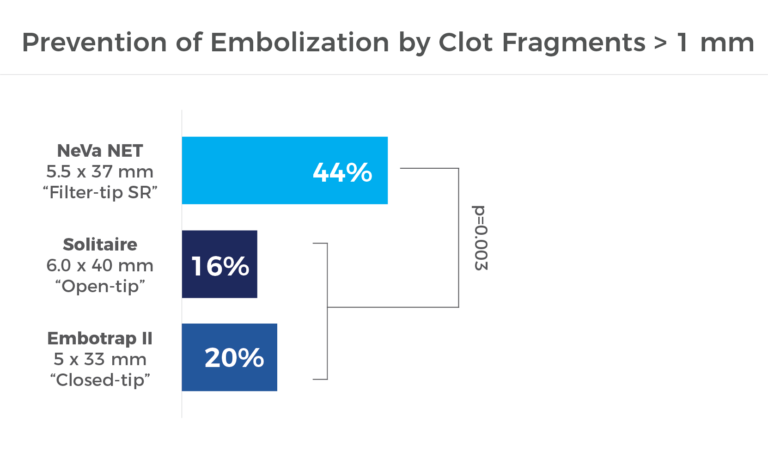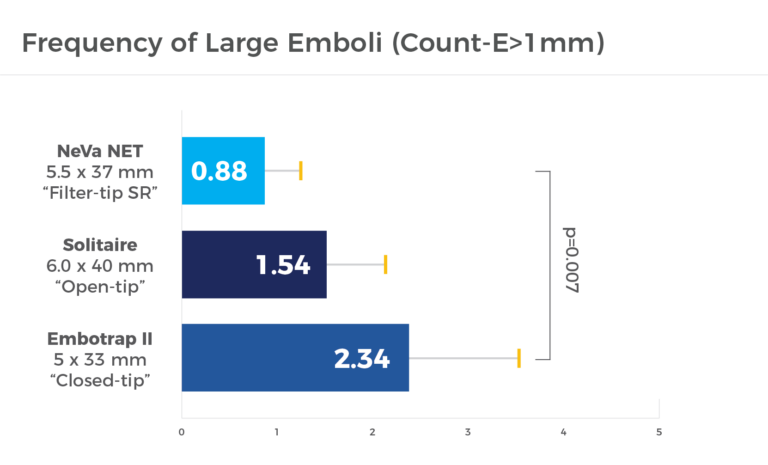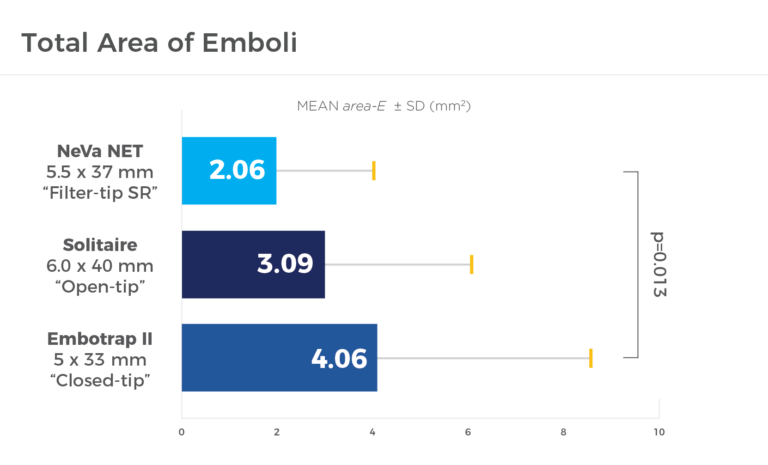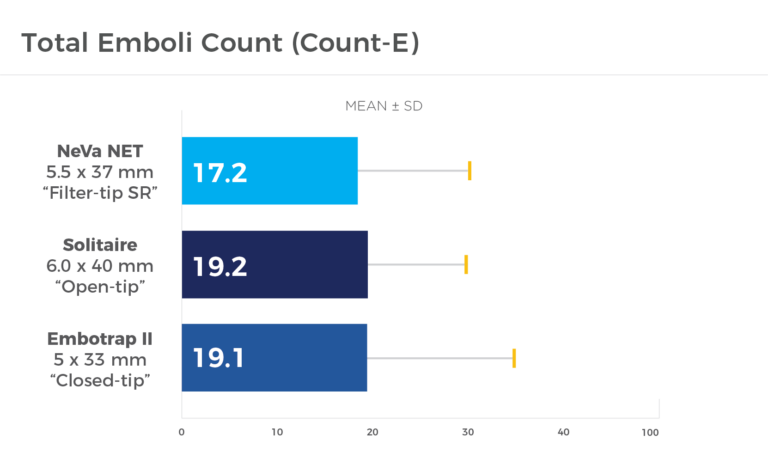Paper:
Impact of stent-retriever tip design on distal embolization during mechanical thrombectomy: a randomized in vitro evaluation.Authors:
Jiahui Li, Riccardo Tiberi, Pervinder Bhogal, Jan-Hendrik Buhk, Daniel Behme, Alejandro Tomasello, Marc RiboJournal:
Journal of Neuro-Interventional Surgery– MAY 2023Background:
Repeated number of passes, clot fragmentation, and distal embolization during mechanical thrombectomy (MT) lead to worse clinical outcomes in acute ischemic stroke. This study aimed to assess the recanalization and embolic outcomes of different stent-retrievers (SRs): open-tip SR (Solitaire X 6 × 40 mm), closed-tip SR (Embotrap II 5 ×3 3 mm), and filter-tip SR (NeVa NET 5.5 × 37 mm).
Methods:
Stiff-friable clot analogy were used to create middle cerebral artery (M1-MCA) occlusions in a benchtop model. After occlusion, experiments were randomized into one of the three treatment arms. The thrombectomy technique consisted of retrieving the SR into a balloon guide catheter under proximal flow arrest and continuous aspiration. A total of 150 single-attempt cases were performed (50 cases/treatment arm). Distal emboli (>100 μm) were collected and analyzed after each experiment.
Results:

Filter-tip SR achieved a non-significantly higher first-pass recanalization rate than open-tip SR and closed-tip SR. (66% vs 48% vs 44%; P=0.064)

Filter-tip SR was significantly better at preventing clot fragments >1mm from embolizing distal territories. (44% vs 16% vs 20%; P=0.003)

The frequency of large emboli was significantly lower in the filter-tip arm than in the closed-tip arm (count-E >1 mm=0.88±1.2 vs 2.34±3.38; P=0.007)
No significant differences were found in pairwise comparisons between open (count- E>1 mm=1.54±2.07) versus closed-tip or filter-tip SRs.

Total area of emboli was significantly smaller in the filter-tip arm than in the closed-tip arm (E=2.06±1.85 mm2 vs 4.06±4.80 mm2; P=0.013).
No significant differences were found in pairwise comparisons between open (area-E=3.09±3.12 mm2) versus closed-tip or filter-tip SRs.

In total emboli count, the differences were not significant between treatment arms in terms of total emboli count (open-tip= 19.2±13.1, closed-tip= 19.1±10.7, filter-tip= 17.2±13.0; P=0.660).
Conclusion:
When facing fragment-prone clots, the filter-tip SR significantly reduces the number of large clots (>1 mm) that embolize distally during an MT procedure, which in turn may increase the chances of first-pass complete recanalization.